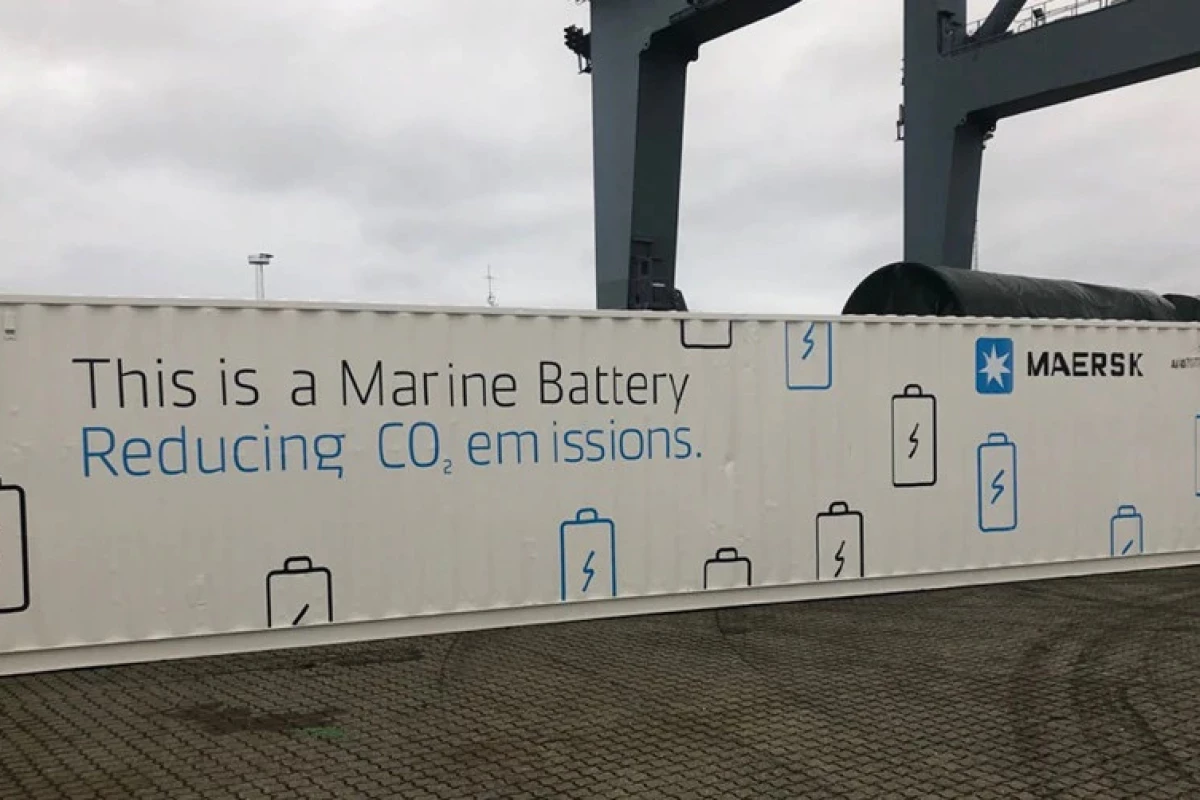Maersk has teamed with Trident Maritime Systems to create a 600 kWh container battery that can be placed on a container-hauling ship to provide power. The battery is now en route to be installed on the Maersk Cape Town container vessel.
The Cape Town, built in 2011, is flagged from Singapore and carries cargo between West Africa and East Asia. The battery will be installed on the ship in December 2019 and its first voyage with the new technology will happen early in 2020. The battery module was designed to take the place of a cargo container on the ship and can be charged in port, will take charge from the ship’s generator, and from the Cape Town’s waste heat recovery system. The lattermost system is in place on most Maersk ships and recharges the ship’s batteries by using the heat created by engine exhaust to create electrical power.
The battery itself will be used in several ways to reduce emissions and improve efficiency on the Cape Town. It will reduce the load on the Cape Town’s generator, will add power during peak load requirements and will reduce the need to run the generator during low-load times. This evening of the load for power usage will reduce generator use, improving generator maintenance costs while reducing downtime. The battery can add up to 1,800 kVA when required. It’s also a backup when the generator is not working or must be shut down.
Maersk plans to utilize the information gained from this trial run to determine if it's on the right track towards a sustainable future. “This trial will provide a greater understanding of energy storage that will support Maersk in moving towards further electrification of its fleet and port terminals,” explains Søren Toft, Maersk COO. “Maersk will continue to facilitate, test, and develop low-carbon solutions on our journey to become carbon neutral by 2050.”
Source: Maersk




